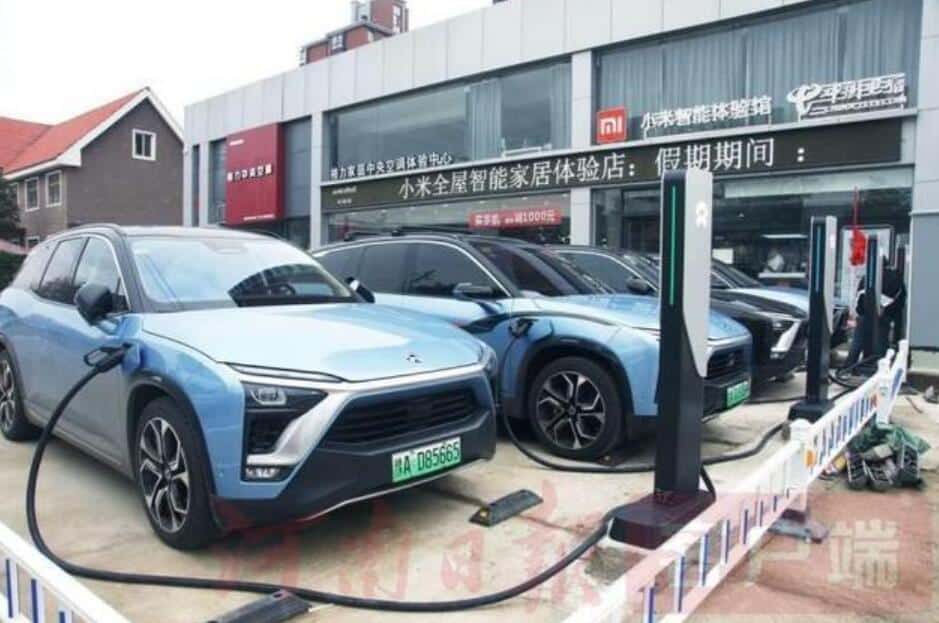On October 22, Tesla announced its third-quarter financial results, with revenue and net profit up sharply year-over-year, and has been profitable for five consecutive quarters.
Since Tesla entered China, its sales have continued to grow and it has been seen as a benchmark for other car companies in the new powerhouse segment. Thus, studying Tesla also shows why the new powerhouse is struggling to make a profit.
Tesla produced 145,500 vehicles in the third quarter, up 51% year over year and 76% over the second quarter.
Tesla delivered 139,600 vehicles in the third quarter, up 44% year-over-year and 54% from the second quarter, another new high.
Of these, 128,800 Model 3 and Model Y units were produced, up 60 percent year-over-year and 69 percent over the second quarter.
Model 3 and Model Y deliveries of 124,300 units were up 56% year-over-year and 55% over the second quarter.
Tesla generated revenue of $8.771 billion in the third quarter, up 39 percent year-over-year and 45 percent from the second quarter, beating market expectations of $8.478 billion, with an operating margin of 9.2 percent.
It reported revenue of $7.611 billion from its automotive business, up 42% year over year and up 47% from the second quarter.
Its automotive business had an operating margin of 27.7 percent, up from 25.4 percent in the second quarter.
Tesla earned $397 million in operating income from the sale of regulatory credits.
Tesla's profitability is due to three main factors: the gradual recovery of the Chinese market after the stabilization of the epidemic; the effectiveness of Tesla's cost-cutting strategy, which started a price war to win the market; and the full deployment of the new energy vehicle industry chain.
Tesla reaffirmed its 2020 delivery target of 500,000 Tesla vehicles. According to further calculations, Tesla will deliver more than 180,000 vehicles in the fourth quarter, an increase of 30 percent from the third quarter, and based on its current performance, it will not be difficult to achieve 500,000 deliveries for the year.
Tesla's initial product was positioned in the premium electric vehicle market, and since October 2019, the price of the Chinese-made Model 3 standard range-extended version has been reduced several times until October 2020, when the car's price is reduced to RMB 249,900 from an initial RMB 355,800.
The price adjustment reflects China's electrified manufacturing capabilities and cost advantage, while also putting tremendous pressure on the country's new powerhouse automakers.
Tesla is not only focusing on products, but also on energy storage, powertrains, and superchargers across the board.
In September this year, Tesla announced a number of new technologies during its Battery Day, with the main aim of reducing costs in order to secure a price advantage in the market and increase sales.
According to Tesla, by 2025, through cost reduction measures, the cost of Tesla battery pack is expected to drop by 56% to $56/kWh, and the price of a Tesla electric car is expected to drop to $25,000.
Extrapolating this in turn, a Tesla Model S with a 100 kWh battery pack, for example, would see its per-vehicle battery cost drop from $13,000 to $5,600, and the price of the vehicle could fall by 10%.
With the quality of the product guaranteed, such a drastic price cut is bound to win the market's favor and quickly increase sales.
Meanwhile, Tesla has announced that it will expand its power battery production capacity to 10 GWh in 2021 and 200 GWh in 2022, which will not only reduce costs but also improve the matching performance of the battery and vehicle if it can achieve self-sufficiency in the future.
In addition to Tesla, China's new power car companies also continue to raise funds to upgrade and make a comprehensive layout in terms of products and technology.
In terms of the layout of business areas, the following characteristics of the new car-making powerhouses currently exist.
1. Continuous financing for production
Car manufacturing requires constant blood production to advance production.Nio has raised $1.6 billion, Xpeng has raised around RMB 20 billion, and Ideal Auto has raised around RMB 15 billion.
As most of the new power companies are developing new technologies and pushing new energy and smart network connection continuously, they need a lot of financing to ensure smooth production in the stages of talent introduction, technology development and product launch.
At present, the development of Nio, Xpeng, and WM Motor is gaining momentum, and the increase in sales of new energy vehicles has brought confidence to the market. 2.
2. heavy losses and short-term break-even difficulties
In terms of profitability, including Nio and Xpeng, the new carmakers are still struggling to make ends meet.
Nio 2019 loss of 11.296 billion yuan, the loss increased to 17.2%.
In the future, on the basis of self-sufficiency, the new power car companies will have to focus on technology research and development in order to cope with market competition, and the competition is bound to be more intense in the future, and the key to achieving profitability is to overcome the core technical problems.
In the future, new energy vehicles will remain a key part of the national strategy, and new power automakers will need to constantly break new technologies and upgrade their products in order to capture the market and eventually achieve profitability.

